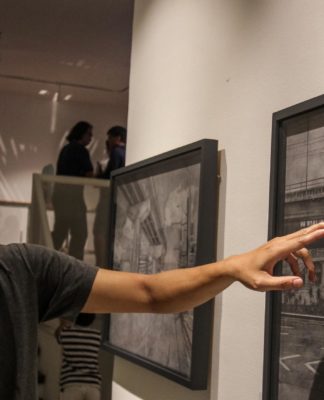THERE’S also “bill shock” in UST.
Students are questioning how laboratory breakage fees are being computed, prompting the Laboratory Equipment and Supplies Office (LESO) to come up with a “transparency program.”
Pharmacy Student Council President John Mark Villena raised the matter in a student-administration dialogue last June 27, pointing to a number of “discrepancies.”
“LESO only declares the amount a student must pay without any breakdown of what that price is specifically for, and without any chance of asking if we really broke glassware or if that really is the price,” Villena said.
But LESO administrator Ross Vasquez said his office has been issuing reminders on breakage on laboratory request forms, adding that counter clerks are available to answer students’ queries.
Still, students are often shocked with the costly laboratory breakage fee, which usually ranges from P150 to P270 per subject, Pharmacy senior Giormanu Cuntapay said. “Nagugulat na lang kami na ganun kamahal `yung babayaran namin kasi biglaan na lang lumilitaw sa tuition namin, at wala silang (LESO) binibigay na listahan kung ano `yung mga kulang namin.”
Pharmacy sophomore Kharissa de Guzman said a breakdown of fees should be provided. “Dapat ma-implement `yung breakdown kasi parang bayad na lang kami nang bayad pero `di naman namin nakikita kung saan `yun napupunta,” De Guzman said.
In response, Vasquez said: “The LESO computes laboratory breakages based on the prevailing price of the apparatus, and the price list is posted on two display cabinets near the [LESO] office so that students will be aware of the amount of each apparatus.”
To end the dispute, LESO and the Santo Tomas E-Service Providers will implement the “On-Line Inventory of Glassware Issued to Students” program this semester through the MyUste Student Portal. The program will provide a full accounting of the laboratory breakage fee.
This year, broken laboratory equipment such as the 2000 mL beaker, 1000 mL Erlenmeyer flask, and 25X200 test tube cost P665, P331, and P54, respectively.
Vasquez explained the discrepancies this way: students were not aware that disposable equipment and supplies—such as wire gauze, wooden test tube holders, dropping pipettes, glass tubing, rubber tubing, rubber aspirators, capillary tubes, 2-mm glass rods, corks, copper wires, stirrers, and nichrome wires— would automatically be charged to them.
“[Students] were not aware that some glassware, when issued to them, are considered disposable and should not be returned to LESO after issuance,” he said. “There are some disposable items that are considered disposable and payable even though they have not broken them.”
A requisition form containing a list of disposable items and a reminder on breakages is issued before the use of laboratory equipment, Vasquez added.
Vazquez noted that students no longer paid a laboratory deposit, which was removed years ago due to complaints over discrepancies. The laboratory deposit, which was paid upon enrollment, covered the use of glassware in the laboratory.
“Wala kasing standard computation ng [laboratory] deposit per subject kasi iba-iba ang requirement [ng bawat subject],” he said.
LESO also supplies laboratory glassware to the colleges of Science, Education, Nursing, and the Faculty of Engineering.














